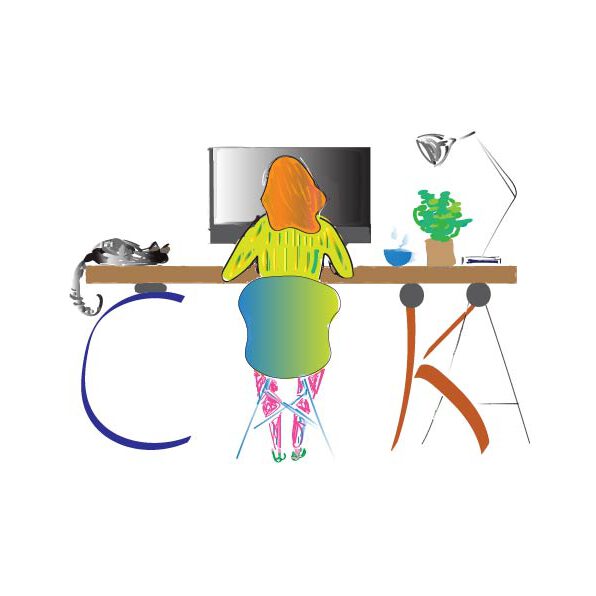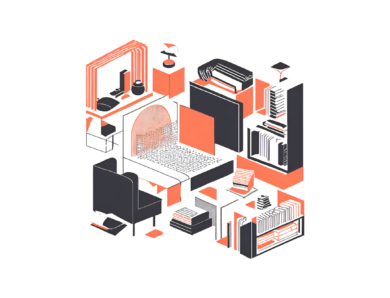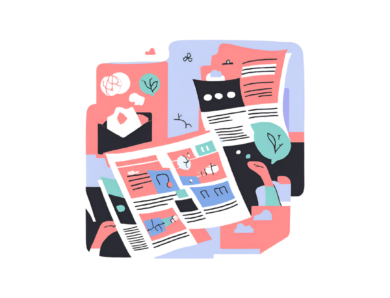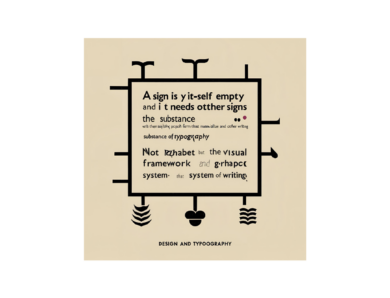Week 9
Webinar
This week we had a webinar about service design. Frauke mentioned Enzo Mari and Corinna Sy. Sy did a workshop with refugees to make their own furniture. I found more information about the project online and found it a very interesting approach to not only involve migrants and co-create with them, but also to communicate this to a wider public.
Other Resources:
Another interesting lead I followed recently after listening to a podcast on NPR called ‘Understanding Migrants Through The Things They Carried’. In this podcast, Jason De Leon, archaeologist and anthropologist, talks about his ‘Undocumented Migration Project’. A project that takes a closer look at the things people leave behind when crossing the border from Mexico to the USA. Despite having been raised near the Texas and California border, De León admits, “I realized I didn’t know anything” about immigration. However, he believed that archaeology could offer insights into this complex issue. His study indicates that migration patterns have evolved over the years. For example, in 2009, he started noticing black plastic bottles. White containers were too easily spotted by Border Patrol officers; now migrants carried bottles adorned with images of the patron saints of migrants or maps of significant landmarks (Rachel Hartigan 2018).
- https://www.npr.org/2013/07/05/199057094/understanding-migrants-through-the-things-they-carried
- https://www.nationalgeographic.com/magazine/article/embark-genius-jason-immigration-archaeology
- https://education.nationalgeographic.org/resource/anthropologist-jason-de-leon/
Lecture: Service Design and Saving the World by Stuart Tolley
- Service Design = Method for improving the quality of user service-> Planning, organising people, infrastructure, communication (…) of a service to improve it’s quality and the interaction between provider and customer.
5 key principles of service design:
- User-centered
- Co-creative: involve others
- Sequencing: Services are visualised by sequences/key moments of customer journey
- Evidencing: Customer is aware of the service
- Holistic: Entire experience of a service
Tools: Stakeholder maps, personas, customer journey, storyboards etc.
www.servicedesigntools.org
Book: This Is Service Design Doing By Marc Stickdorn, Markus Edgar Hormess, Adam Lawrence, Jakob Schneider
Examples: Independent Liverpool (https://www.healthwatchliverpool.co.uk/)
-> ultimately the customer experience will be the judge of whether a project is a success or not.
What is service design article: https://www.interaction-design.org/literature/topics/service-design?srsltid=AfmBOoqgfON9tDOu050chlt6zzEtCrZNuIQJ8toWH7qwhChxQ555TROx
Artist as Activist
- John Hartfield: Criticism of fascism in W2 -> use of photomontages
- Peter Kennard: Basis of his work is a critique of what’s going on in the world:
- -What caused it?
- -Denormalize images
- -Something against the smoothness of advertising
- -Show in as many places as possible
- Center for the study of political graphics: Educational, research archive with more than 80.000 human rights & protest posters from around the world
- “Not about the tools, it’s about using the best tools to bring people together” (Jeremy Hyman) -> Power of social media
- Are established methods for protests outdated? No longer change society, innovation or irrelevance (Book by Micah White: The end of protest)
Weekly Resources
Can Art Stop a War and Save the Planet? | Carol A. Wells | TEDx
- Who is the audience? -> make them feel empathy (show the victim)? Or is it about empowerment (instead of showing people as victims)
- Take something that is known and combine it with a message
Manzini and Rachel Coad speak of social innovation in a way that utilises existing resources and capabilities to define new purposes and interpretations. In this process, they introduce ways of thinking and problem-solving that differ from the locally prevailing patterns of thought and behaviour that are considered ‘normal’ and most common within the specific socio-technical environment.
For instance, they highlight the prevalent issue of an aging population, posing the question: ‘How can we care for all these elderly individuals?’ In modernized societies, the typical response is: ‘Develop more specialized, professional social services.’ However, a truly innovative approach suggests: ‘Don’t merely view older individuals as a challenge, but also as potential contributors. Encourage their capabilities and eagerness to participate actively and leverage their social connections.’ This is a perspective, which considers older people not just in terms of their needs but also their skills and desires. These has led to a number of innovations such as care circles and shared living arrangements for seniors (where they receive support through various forms of mutual assistance), effective partnerships between the elderly and younger individuals (such as the ‘hosting a student’ initiative, where seniors with large homes offer rooms to helpful students), and various other intergenerational housing models where residents of different ages commit to supporting one another. These instances can be viewed as examples of radical innovation because they offer an alternative perspective on a problem that appears extremely challenging, if not entirely unsolvable, from a conventional standpoint (p.13).
————————
Guerilla marketing is a strategy that involves the effect of surprise, by displaying ads or tactics in an unexpected way. This potentially leads to sharing the content via social networks or simply talking about it. (https://www.bdc.ca/en/articles-tools/entrepreneur-toolkit/templates-business-guides/glossary/guerrilla-marketing)
An example of guerrilla marketing that raises awareness in the social sector is the Unicef ‘Dirty Water’ project, where vending machines with bottled dirty water were placed on the streets of New York to raise awareness that people should not buy bottled water, but focus on the real problem – the millions of people who drink unsafe and dirty water every day.
Tutorial with Frauke (18.03)
I just had a tutorial with Frauke where I asked her if having the book is enough, but I’m not sure if my outcome with the conversations is a sufficient contribution to the current issues of migration. She told me that having the conversations might not be enough. I told her that I don’t have much time left to do anything for migrants in my city. That I have contacted several refugee organisations, but that they don’t have time to help me. And that I needed to come to a weekly open dialogue with migrants (or something similar) myself.
Throughout the semester, I had suppressed the idea of going to one of these open discussions because of the lack of time. But Frauke confirmed to me that it would be very good to include the current migration topic. I told her that I had also thought about how I could link the topic of the glass bowl to the current discussion. I need to think again about the purpose of my design. Is it to evoke empathy? Yes, that’s what I thought.
- How can a hidden story be brought to the fore? Or should it perhaps remain hidden? (Voyeurism?)
- She said I could think about what I would take with me if I had to leave. This had also crossed my mind briefly. And the first thing I thought of were my cats.
- You could then extend that to the migrants or even ask friends what they would take with them.
- Maybe the bowl represents other things?
- She said I could look at my city and make a kind of installation with bowls (if I don’t have the objects from Migranten, for example)
I shared the outcome of my discussions with Louis and he told me he also likes the idea to iterate on the outcome of the conversations and if they are bringing enough value to the current issues of migration.
He told me about two books that deal with migration. In his book ‘The Great Derangement’, Amitav Ghosh talks about how we are all migrants and describes how his family migrated in the mid-19th century. Similar to what I had thought at the beginning of the semester, he said I could use my grandmother’s story as a starting point to ask, ‘When did your family migrate?’
Another book he mentioned is Moshin Hamid’s Exit West. A bit more of a surreal book where people can just go through doors and appear in another country. He also focuses on how normal it is in human history to migrate.
Another idea that had come to my mind would be to do the Kintsugi repair with a few migrants, maybe I could ask them first what object they would have brought and then symbolically bring something that they could repair….




No Comment